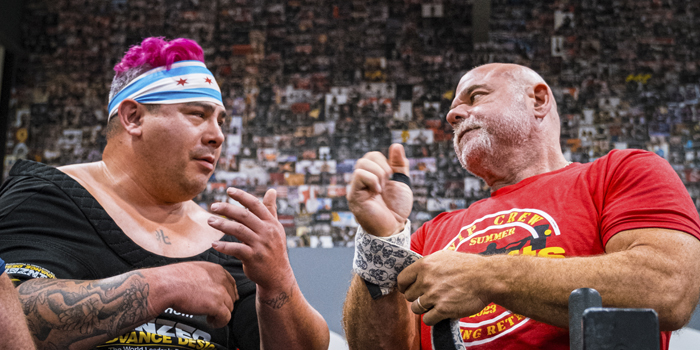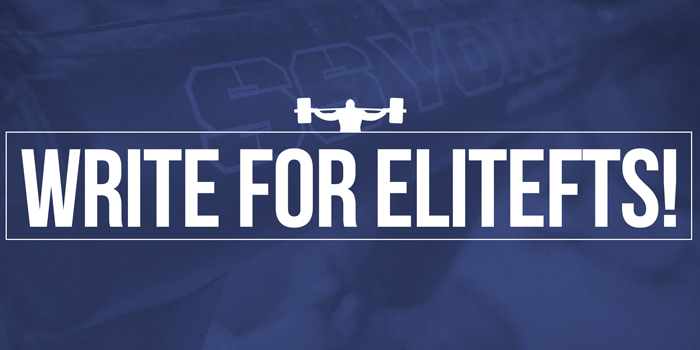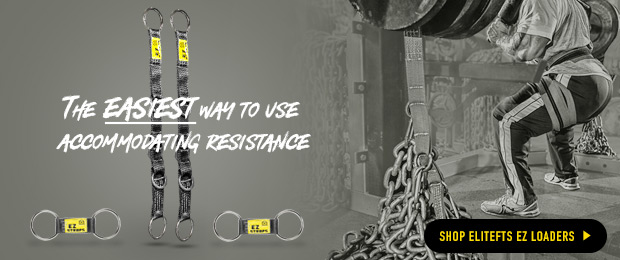
No one has ever built a big bench with push-downs alone. Exercises using heavier weights might be the best way to build pressing power. In many cases, it will be superior to any other tricep isolation exercise.
In this article, I am not going to go into the normal max effort pressing work. Every lift listed here would fall under supplemental work or as a finisher. You should not need to do much isolation work after you are done with these exercises, if done correctly. If you are trying to add mass, work around an injury, or just build pressing power one of these lifts will suit your fancy.
If you have elbow pain when pressing or just love doing work, the article How to Build a Bench Press with Trashy Triceps help explains how I worked around elbow pain.
Recent: How to Build a Bench Press with Trashy Triceps
Tricep Hell
YouTube
This is the classic Glen “Power B” Beuchlin tricep finisher. You will need two or more helpers for this series of presses. The goal is five reps starting at your chest then adding a board every five reps. If, and I do mean if, you do get through all the pressing on the five board then you will work your way back down. If you get through the five boards that means you have already done 30 reps, so choose wisely. Choosing a weight can be difficult, so start with something you can do for 20 full reps.
Tricep Hell could be done with chains, bands, reverse bands, a fat bar, or just straight weight with a regular power bar. This provides many options to keep this in your program before needing to rotate it out.
Shoulder Saver Mechanical Drop Sets
For those of us who train alone, Tricep Hell and Tricep Death are not options you can do. One viable option would be to use the black or red Shoulder Saver Pad for mechanical drop sets. Here is a video from Regionbarbell using the Shoulder Saver Pad.
Option one - To perform the drop set you will start with the short side of the pad. Perform five to ten reps, rack the bar, flip it to the fat side of the pad, and then perform another five to ten reps on that side.
Option two - Again because you are training alone you want options. This mechanical drop set will give you more options by using either the short or fat side and changing the grip to change the mechanics. As above, you will do between five and ten reps per grip. Choose a side of the pad you will use and using a close grip perform your reps. When you hit the reps rack the bar, move your grip out, and again perform the desired reps. I like to go right at the smooth and then move to a max competition grip.
Tricep Death
This was our squad's adaptation of Tricep Hell. We made this change because high reps ended up pushing us into bad technique as muscles fatigued. So we cut the reps and number of boards allowing us to handle more weight before any technique broke down.
This version is best used after dynamic effort (DE) bench. We left any accommodating resistance on the bar for the sake of simplicity. Rather than using all five boards in Tricep Hell, we chose three. The three chosen put the bar closest to our mini-max. The first board is where you actually start to lose speed, the second is where the bar stalls and the third is where you start to recover from the mini-max.
Often we used a two, three, and four board. For longer-armed lifters going up a board is not a bad idea either (three, four, or five boards). Depending on how you feel after DE, choose your reps. Two to four reps per board will keep you in the six to twelve rep range. Which is enough to handle heavier pressing without losing too much technique. Three to five sets should hit the triceps hard. If you feel the need for a pump after, some pushdowns will finish off anything you have left.
**You will need training partners for this. You can not do it alone.
Recent: Supplemental Pressing
5/3/1 for Supplemental Pressing
In 2014 after having used a set/rep scheme based on Jim Wendler's 5/3/1 I wrote an article on how I used it for supplemental pressing. The premise was to pre-fatigue the triceps using sub-maximal effort before dynamic effort. Using a “program” like this to build your weak point over time is easy to follow and maintain. The first few times you do this you will actually feel your triceps working or being fatigued during your DE bench.
This is not totally 5/3/1 but I took Jim's basic ideas to make progress. Take your builders (exercises that make your bench press go up) and run them for multiple cycles. Then retest to see if you are on the right track. If your max effort starts to tank, this would then need to be modified or you will need to look at your recovery. Go read the article for more details.
JM Press and Pushdown Combo
I love this one-two punch for the triceps. The problem I have is that most people are doing the JM press wrong. Fortunately, there are two great videos explaining how to do it correctly.
If you are new to the JM press then practice and starting light are key. Once you are experienced I would use sets of three to six reps paired with pushdowns doing 20-25 reps per set. Four to six supersets should beat your triceps into submission. If you have had pain from the JM press in the past, you might not be ready for heavy straight weight. Instead, try using a reverse band set up to lighten the weight at the bottom or do them against a chain. This way you get the benefits of accommodating resistance and hopefully pain reduction.
Bare Bones Bonus - Isometrics and Dynamic Effort Floor Press
For those of you readers following my Bare Bones Program this is for you. Board pressing without a partner or with limited equipment can be difficult. It is possible with a little improvising and an elitefts rack with the one-inch hole spacing (please tell me you did get one-inch hole spacing). You can set up your pin for isometrics paired with floor pressing. This is not for detrained lifters. I would also recommend reducing the nervous system work for this cycle to only one day per week during this cycle.
Isometrics will build not only the angle we work but plus and minus 15 degrees from that angle. Another bonus is the isometrics will work that position maximally for five to six seconds while a normal max effort set will work it for a fraction of a second. If you haven’t already skipped ahead to the plan, I will not hold you back much longer.
Three Week Plan
This three-week cycle combines max effort, dynamic effort, and static overcome by dynamic work. So what does that mean for you? It will be hard if you push yourself, it can beat you up, but if you can recover from it you can get very strong. I like this more for a peaking cycle or to break up the monotony. It is also good if you know you will have limited time in the gym for a few weeks.
Set up the isometrics to work three different arm angles. Try to hit the bar so it is right where you start to slow down on a max effort lift, your mini-max (where you stall), and right above where you stall. You will do one close grip, one medium grip, and one with pinky on the rings. After each isometric, you will rest for two minutes, then perform three dynamic effort sets with 30-45 seconds rest between sets. After each round, you will move your grip out. For those of you visual learners, I have a video below.
- Isometric press maximally - six seconds
- Rest two minutes
- Three dynamic effort floor press sets (30-45 seconds rest)
- Rest only enough to set up the next isometric set and repeat with the next grip.
- If you are feeling good take one to two heavier singles above your speed weight. Keep the weight under 90%.
After you are done you will want to hit some light isolation work to bring blood to the area. Do something that will bring in high amounts of blood and do not do something heavy that might cause pain.
Adaptability Brings Improvement
Each week small changes were made. Overall volume increased each week.
There are many ways to get things done. Pressing is fun. Breaking personal records is even more fun. Implement some of these ideas and get to work. If you are having any pain stop and re-evaluate. There are ways to work around it.
Matt Ladewski has been involved in the sport of powerlifting for over 20 years. As his pursuit of bigger numbers of his own has concluded, his attention has shifted to coaching his athletes, including a WPF and an AWPC champion. As a columnist for elitefts, Matt shares his training knowledge and experience as he writes about both his own training and the coaching of his athletes. Matt's best competition lifts include an 835-pound squat, a 550-pound bench press, and an 800-pound deadlift.












Thanks for sharing! :-)
Christian